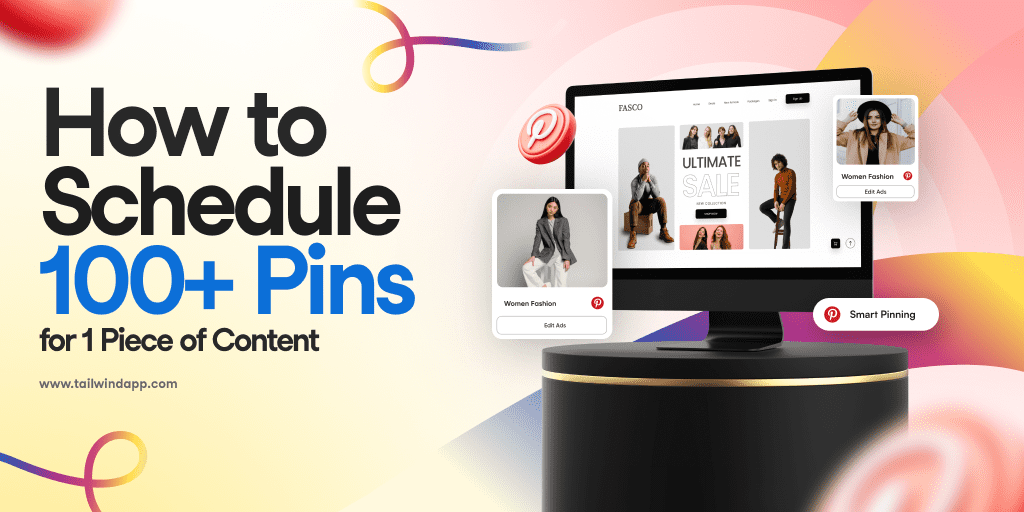
Have you ever heard of a little thing called social media metrics? These marketing tricks help you gauge the effectiveness of your social media strategy, which is pretty important no matter the size of your business.
In a nutshell, social media metrics help you measure the success of a campaign and the overall impact your social media performance has on your business. And it measures these analytics by tracking things like engagement, sales, clicks, and overall growth.
When most people outside of marketing think of social media, they likely don’t think of strategy and statistics.
However, it’s hard to know what works for your audience without a plan, goals, and calculated measurements. Without tracking the metrics, every post is like a random shot in the dark. Any marketing without intention (unless you strike some luck) is a waste of time.
So if you’re a business using social media marketing and want to grow your account and make sales, then this post is for YOU .
Without further ado, there are three important things to consider when measuring your social media metrics.
- What metrics to measure
- Where to measure them
- How to analyze metric performance
And the best part is I’ll be taking you through all of that in this post. By the time you’re done, you’ll be able to track your analytics like a pro.
So let’s get to it, shall we?
What Metrics to Measure
Social media metrics give you a birds’ eye view of your content’s performance. But what social media analytics should you measure to include any potential blind spots?
There are four significant factors to keep in mind that’ll help determine the impact your social media presence is making. These four factors will help you see what your target audience prefers and the success of your campaigns.
Whether you’re a social media marketing manager or an entrepreneur, tracking these analytics will reveal everything you need to know about the success of your efforts.
1. Reach
There are two different types of reach that should be measured. And if you’re wondering, “how could there be different types of reach?”, don’t worry because we’re friends now, and I’ll explain why they’re different yet equally important.
The first type is post reach which keeps track of how many people organically saw the content since it was posted. This is really helpful in seeing where you’re falling in the algorithm and if people are seeing your posts or not.
It also helps measure the engagement percentage to gauge the direct impact your content has on its targeted audience. (We’re just scratching the surface on this topic, but I’ll go into greater detail below. )
The second type is potential reach which shows how many people likely saw your post during a certain period of time. When calculating potential reach, there are three factors taken into consideration.
- Unique Views – How many people saw it both organically and through re-shares?
- Impressions – How many people interacted with the content? This includes likes, comments, and shares. (Want to learn more? Check out our blog post on navigating Instagram impressions and reach!)
- Follower Count – Did anyone follow you after seeing that post?
- Audience Growth Rate – Did you maintain followers or lose any? What’s your overall growth rate? And is that continually climbing, declining, or remaining the same?
2. Share of Voice
This analysis helps you see how many people are mentioning and tagging your account compared to your competitors. It enables you to evaluate your brand’s visibility and relevance within your market’s niche.
3. Conversion Metrics
These analytics help you see how effective your social engagement is at converting followers and making sales. Conversion metrics help you determine how engaging your content is and whether or not you’re targeting the right audience.
You can track conversion metrics depending on where the traffic is coming from and what type of content you’re measuring. But these analytics will significantly help you determine the effectiveness of your social media strategy.
- Website Referrals show how many people come from other websites to yours and which websites are bringing them to yours. This is a standard metric used in affiliate programs and influencer marketing.
- Social Media Conversions track how many people visit your website directly from social media, which helps you see the effectiveness of a post or campaign.
- Conversion Rate is your post’s ratio of comments to the number of overall followers. This metric allows you to see if your audience was inspired to add their voice to your content.
- Click-Through-Rate (CTR) tracks how often people click on a specific link you provide for additional content. CTRs are a great tool when determining how compelling the CTA is to your audience.
- Bounce Rate is a marketing term for the percentage of people who click a link and quickly leave the page without taking any action. The lower your bounce rate, the more people are interacting with your page, meaning you’re hitting the right target audience.
4. Engagement Metrics
These are the most straightforward metrics to track, but they aren’t necessarily the most reliable. Algorithms change frequently, and sometimes a killer post can just get lost. However, the more loyal your audience, the less your content will be negatively impacted by algorithm changes.
So even though these analytics are more subjective, they’re still critical to consider when determining what is working in your social media strategy and what could use improvement.
There are several engagement metrics to keep in mind that the apps will track for you. And we’ll discuss that right meow.
- Likes – This is the lowest form of determining engagement analytics because it is considered the least effort someone has to put into = engaging with a post. This number will generally be the highest analytic and is just part of the picture.
- Comments – Comments are a better indicator of a post’s success. When someone comments, they feel called to share their opinion, which means they want to engage with your content and be a part of the story. Comments are one of the easiest ways to determine if content hits the targeted audience or not.
- Shares – The next level up from comments is someone re-sharing your content as that goes beyond interacting with your content. Re-shares are essentially someone recommending your account to their audience.
- Clicks – This was briefly mentioned in Click-Through-Rate and Bounce-Rate. But this essentially shows the percentage of people who clicked on your content.
- Applause Rate – This metric takes the total number of actions just listed (likes, comments, shares, and clicks) a post receives compared to your number of followers. It provides valuable information on how valuable your audience found that post.
- Likes – This is the lowest form of determining engagement analytics because it is considered the least effort someone has to put into = engaging with a post. This number will generally be the highest analytic and is just part of the picture.
- Comments – Comments are a better indicator of a post’s success. When someone comments, they feel called to share their opinion, which means they want to engage with your content and be a part of the story. Comments are one of the easiest ways to determine if content hits the targeted audience or not.
- Shares – The next level up from comments is someone re-sharing your content as that goes beyond interacting with your content. Re-shares are essentially someone recommending your account to their audience.
- Clicks – This was briefly mentioned in Click-Through-Rate and Bounce-Rate. But this essentially shows the percentage of people who clicked on your content.
- Applause Rate – This metric takes the total number of actions just listed (likes, comments, shares, and clicks) a post receives compared to your number of followers. It provides valuable information on how valuable your audience found that post.

(Interested in growing your engagement on Pinterest? We did a study on how to organically grow your Pinterest engagement.)
Now that we discussed what you should be measuring and the importance of those metrics, let’s go over how to do it. While you may be scratching your head wondering how to keep track of these crucial analytics, sit back and relax because it’s simpler than you’d think.
How to Measure Social Media Campaign Performance
Tracking several metrics on multiple social media platforms and analyzing performance can be a full-time job.
Luckily some apps will track all of that data for you and keep it stored in one single place. Social media tracking apps are simple and great for solo entrepreneurs and companies without a marketing team.
And an app like Tailwind can measure those analytics, saving you from compiling and analyzing the data yourself.
Tailwind allows you to track important analytics for both Pinterest and Instagram, but it has several other capabilities too!
Tailwind Create allows you to make custom posts from templates made by graphic designers. Hashtag Finder makes it easier than ever to find the perfect hashtags that will get your post the most traction. Smart.Bio allows you to include links to various places and tracks when each one is visited. And Tailwind Communities gives you a space to engage with people in your similar niche on Pinterest.
Thanks to social media tracking tools, you don’t need to be a marketer to grow your accounts strategically. Marketing is easier and more accessible than ever.
Tailwind’s blog also keeps our users and readers up-to-date on social media best practices and app changes, like this post on using Pinterest analytics.
Social media performance doesn’t have to be a mystery!
Next Steps
As you can see, social media metrics and tracking your social media performance don’t have to be a headache.
And it’s also vital to your accounts’ growth and success.
Without tracking these metrics, every post is a missed opportunity to learn something from your target audience on what works verse what doesn’t.
While some analytics are easy to see and keep track of, such as likes and comments, an additional app like Tailwind can help keep track of those analytics plus more. Tailwind will also help break the data down into easily digestible information.
You don’t need to be a marketing guru to leverage social media and convert followers into customers.
If you’re not already a Tailwind user, you can try our forever-free plan and see if it’s worth retiring some of those rotating hats you have been juggling. Why not see if it can take a load off your plate and give you fewer things to worry about?
Now that you know what to track and how I suggest checking out our post, How to Build a Social Media Marketing Strategy, next!
The world is your oyster, friends.
Ciao!





